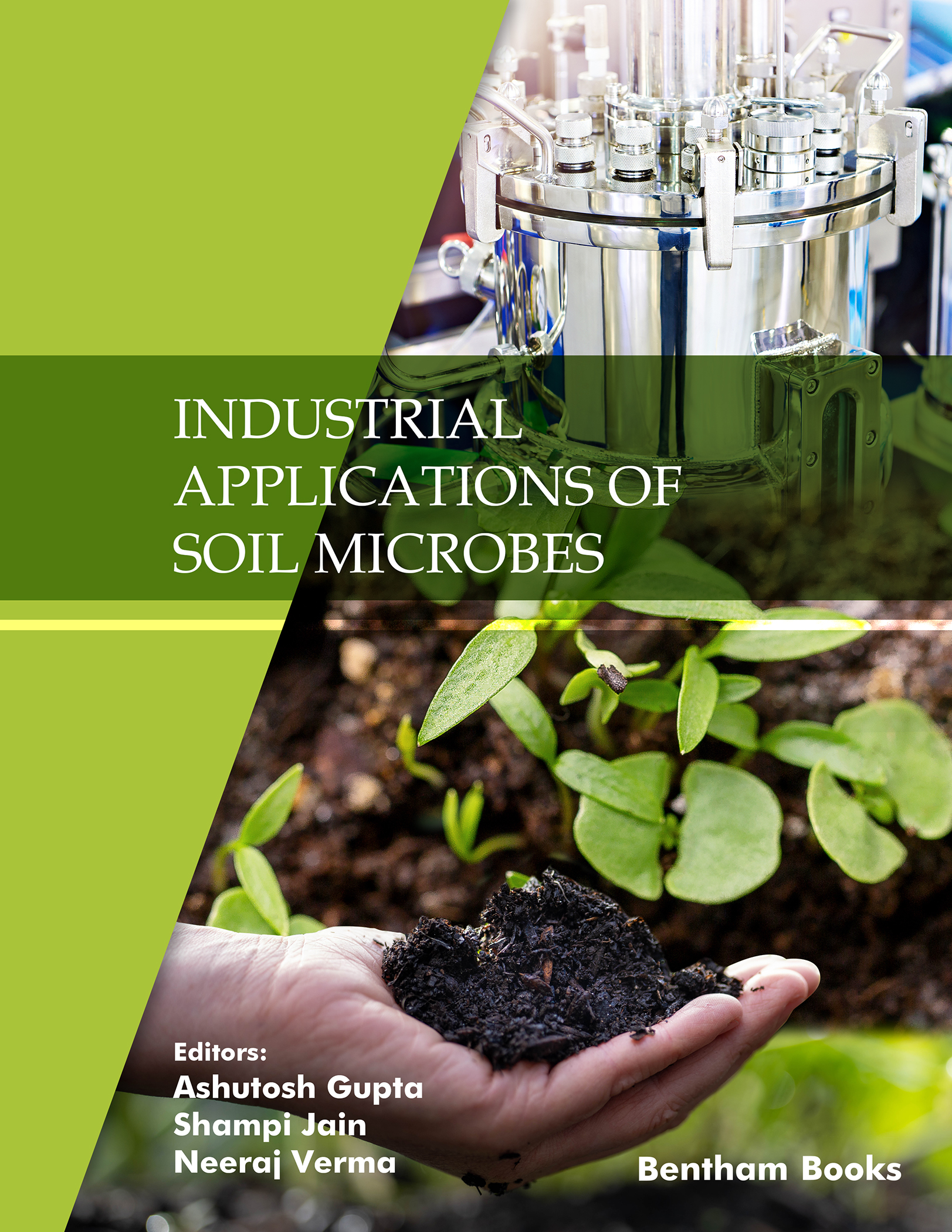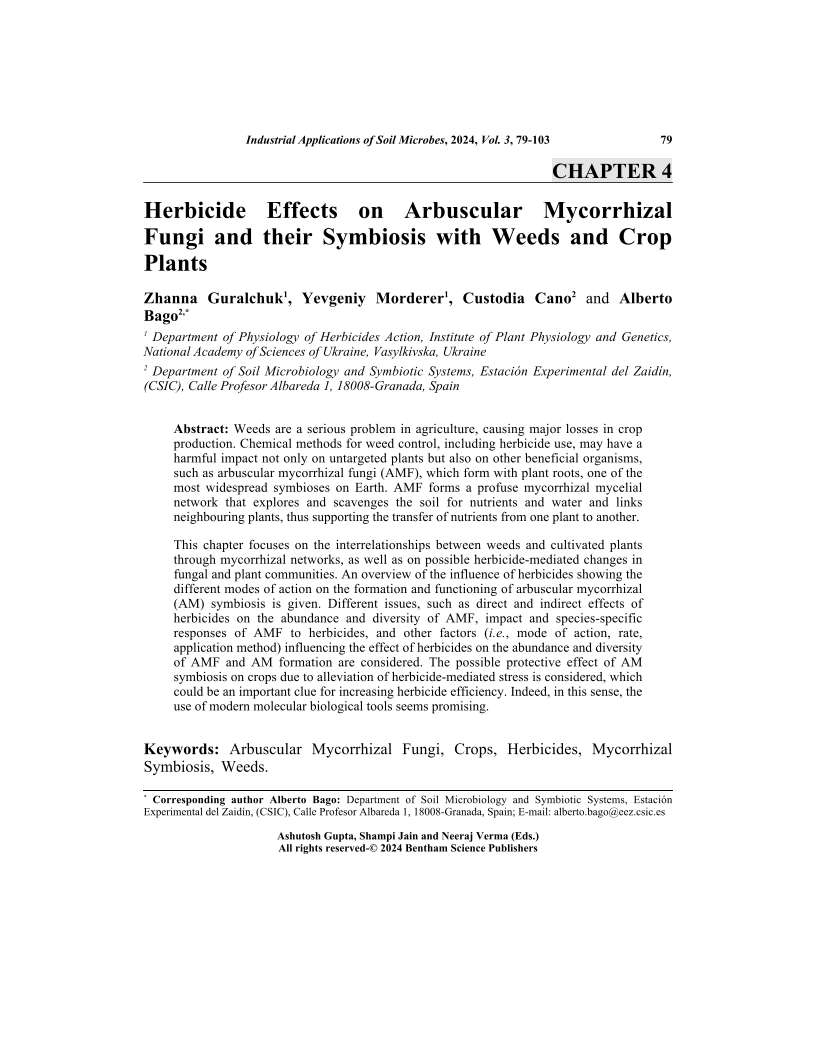Herbicide Effects on Arbuscular Mycorrhizal Fungi and their Symbiosis with Weeds and Crop Plants

- Authors: Zhanna Guralchuk1, Yevgeniy Morderer2, Custodia Cano3, Alberto Bago4
-
View Affiliations Hide AffiliationsAffiliations: 1 Department of Physiology of Herbicides Action, Institute of Plant Physiology and Genetics, National Academy of Sciences of Ukraine, Vasylkivska, Ukraine 2 Department of Physiology of Herbicides Action, Institute of Plant Physiology and Genetics, National Academy of Sciences of Ukraine, Vasylkivska, Ukraine 3 Department of Soil Microbiology and Symbiotic Systems, Estacin Experimental del Zaidn, (CSIC), Calle Profesor Albareda 1, 18008 Granada, Spain 4 Department of Soil Microbiology and Symbiotic Systems, Estacin Experimental del Zaidn, (CSIC), Calle Profesor Albareda 1, 18008-Granada, Spain
- Source: Industrial Applications of Soil Microbes , pp 79-103
- Publication Date: April 2024
- Language: English
Herbicide Effects on Arbuscular Mycorrhizal Fungi and their Symbiosis with Weeds and Crop Plants, Page 1 of 1
< Previous page | Next page > /docserver/preview/fulltext/9789815079753/chapter-4-1.gif
Weeds are a serious problem in agriculture, causing major losses in crop production. Chemical methods for weed control, including herbicide use, may have a harmful impact not only on untargeted plants but also on other beneficial organisms, such as arbuscular mycorrhizal fungi (AMF), which form with plant roots, one of the most widespread symbioses on Earth. AMF forms a profuse mycorrhizal mycelial network that explores and scavenges the soil for nutrients and water and links neighbouring plants, thus supporting the transfer of nutrients from one plant to another.This chapter focuses on the interrelationships between weeds and cultivated plants through mycorrhizal networks, as well as on possible herbicide-mediated changes in fungal and plant communities. An overview of the influence of herbicides showing the different modes of action on the formation and functioning of arbuscular mycorrhizal (AM) symbiosis is given. Different issues, such as direct and indirect effects of herbicides on the abundance and diversity of AMF, impact and species-specific responses of AMF to herbicides, and other factors (i.e., mode of action, rate, application method) influencing the effect of herbicides on the abundance and diversity of AMF and AM formation are considered. The possible protective effect of AM symbiosis on crops due to alleviation of herbicide-mediated stress is considered, which could be an important clue for increasing herbicide efficiency. Indeed, in this sense, the use of modern molecular biological tools seems promising.
-
From This Site
/content/books/9789815079753.chapter-4dcterms_subject,pub_keyword-contentType:Journal105

